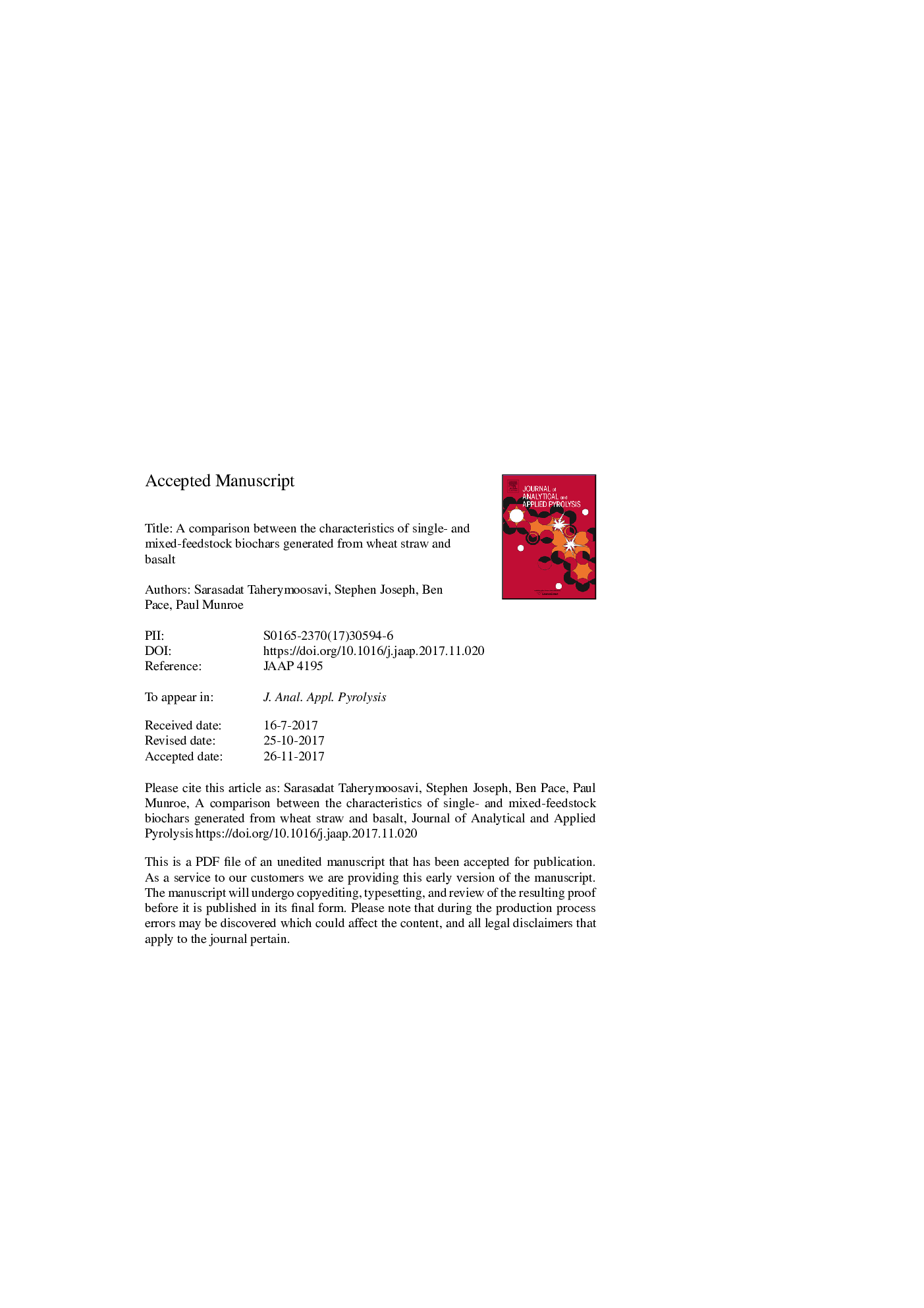| Article ID | Journal | Published Year | Pages | File Type |
|---|---|---|---|---|
| 7606431 | Journal of Analytical and Applied Pyrolysis | 2018 | 31 Pages |
Abstract
Mixed-feedstock-biochars can increase both available soil organic matter (SOM) and inorganic nutrients, yielding a more valuable biochar for agricultural purposes. Since the agronomic benefits of biochar are dependent on its structural and physio-chemical characteristics, this study compares these properties for single- and mixed-feedstock-biochars using a range of analytical techniques. Six biochars were produced from wheat straw (Ws), and a combination of wheat straw and basalt (WsBs) at three pyrolysis temperatures, 450, 550 and 650 °C. The results showed that WsBs biochars contained higher ash contents, with considerably lower fixed carbon, volatile matter and electrical conductivity than the Ws biochars. Microscopic and spectroscopic analyses revealed increases in the concentration of Si on the surface of wheat straw particles during processing. A layer of Si on the surface of the C matrix appeared to prevent further reactions between C-rich phases and some mineral phases (mainly Fe and Ca-rich regions) at 650 °C. Other mineral compounds, such as those rich in K and Na, were adsorbed to both C and Si-rich phases. Basalt incorporation into the wheat straw particles also catalysed new functionalities. Surface C-N-based functionalities (amides) were only detected in wheat straw biochars, whereas ammonium-based groups were found in the WsBs biochars. Concentrations of dissolved organic carbon, which were affected by both feedstock composition and pyrolysis temperature, appeared to be higher in the Ws biochars, with the highest concentrations found at 450 °C. The WsBs biochars contained greater concentrations of biopolymers and humic-like substances than the Ws biochars. These organic fractions would increase the availability of micro-nutrients, reduce ions leaching and promote soil strength and resistance to erosion following the biochar application.
Keywords
Related Topics
Physical Sciences and Engineering
Chemistry
Analytical Chemistry
Authors
Sarasadat Taherymoosavi, Stephen Joseph, Ben Pace, Paul Munroe,
